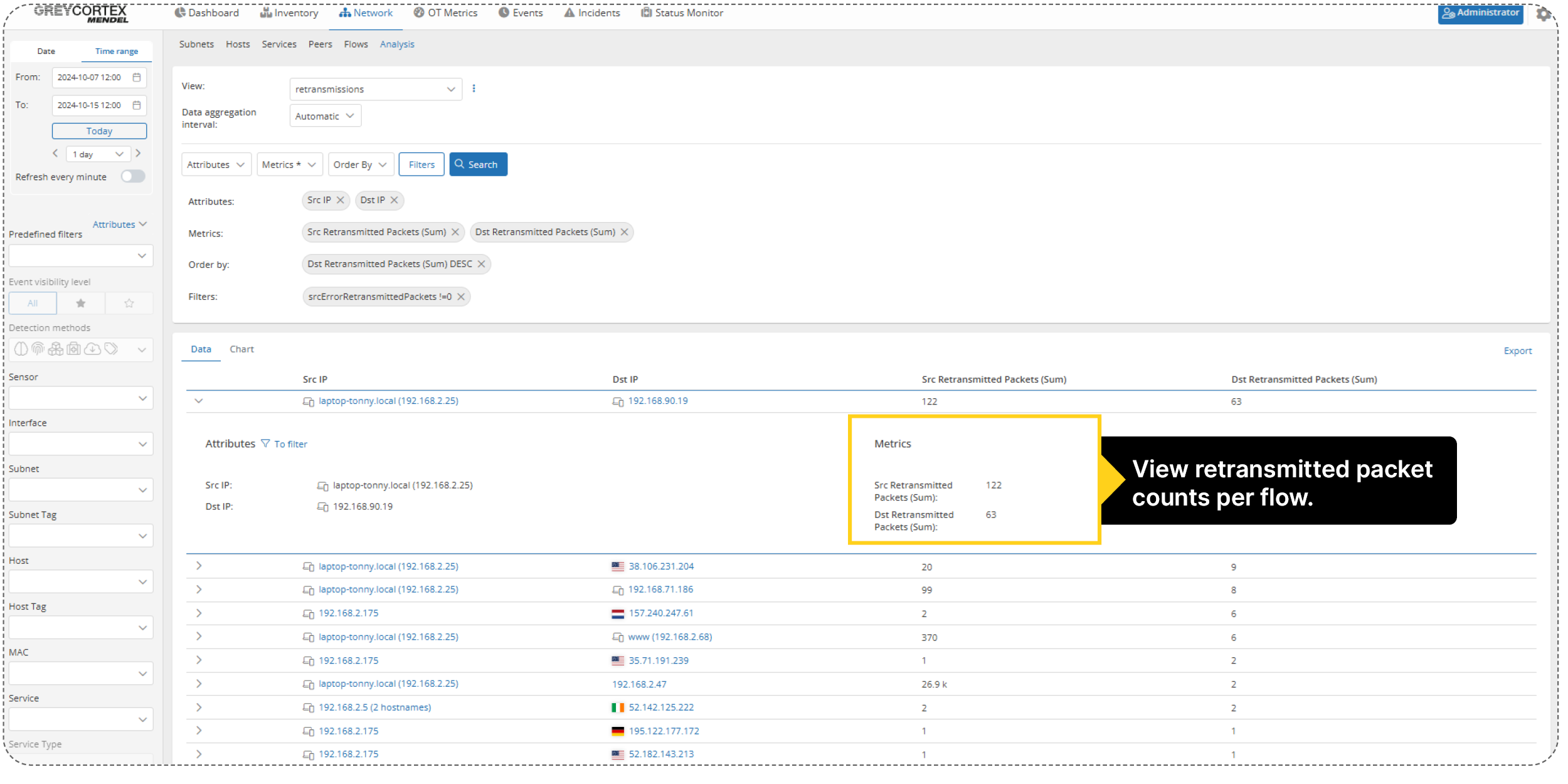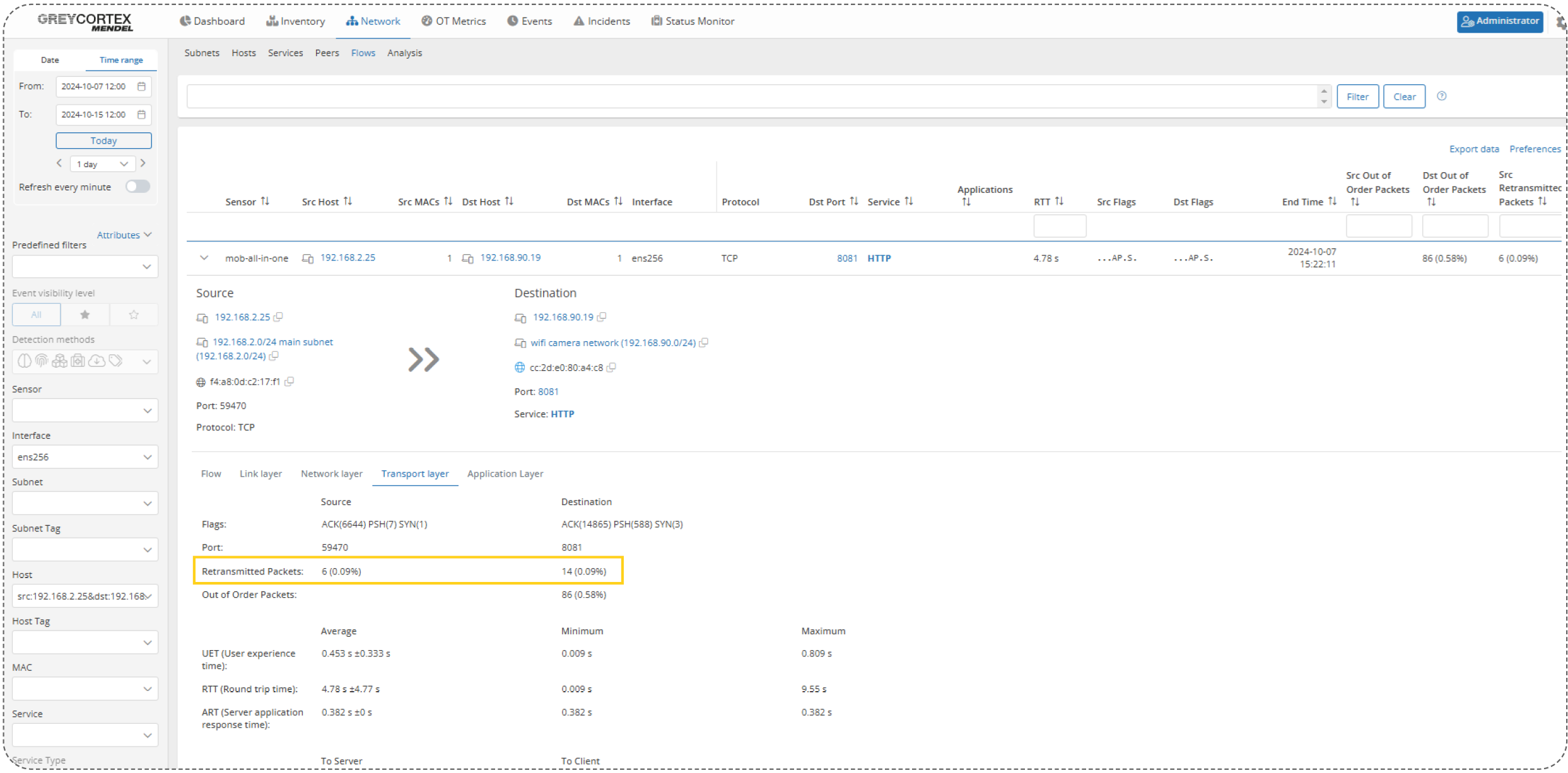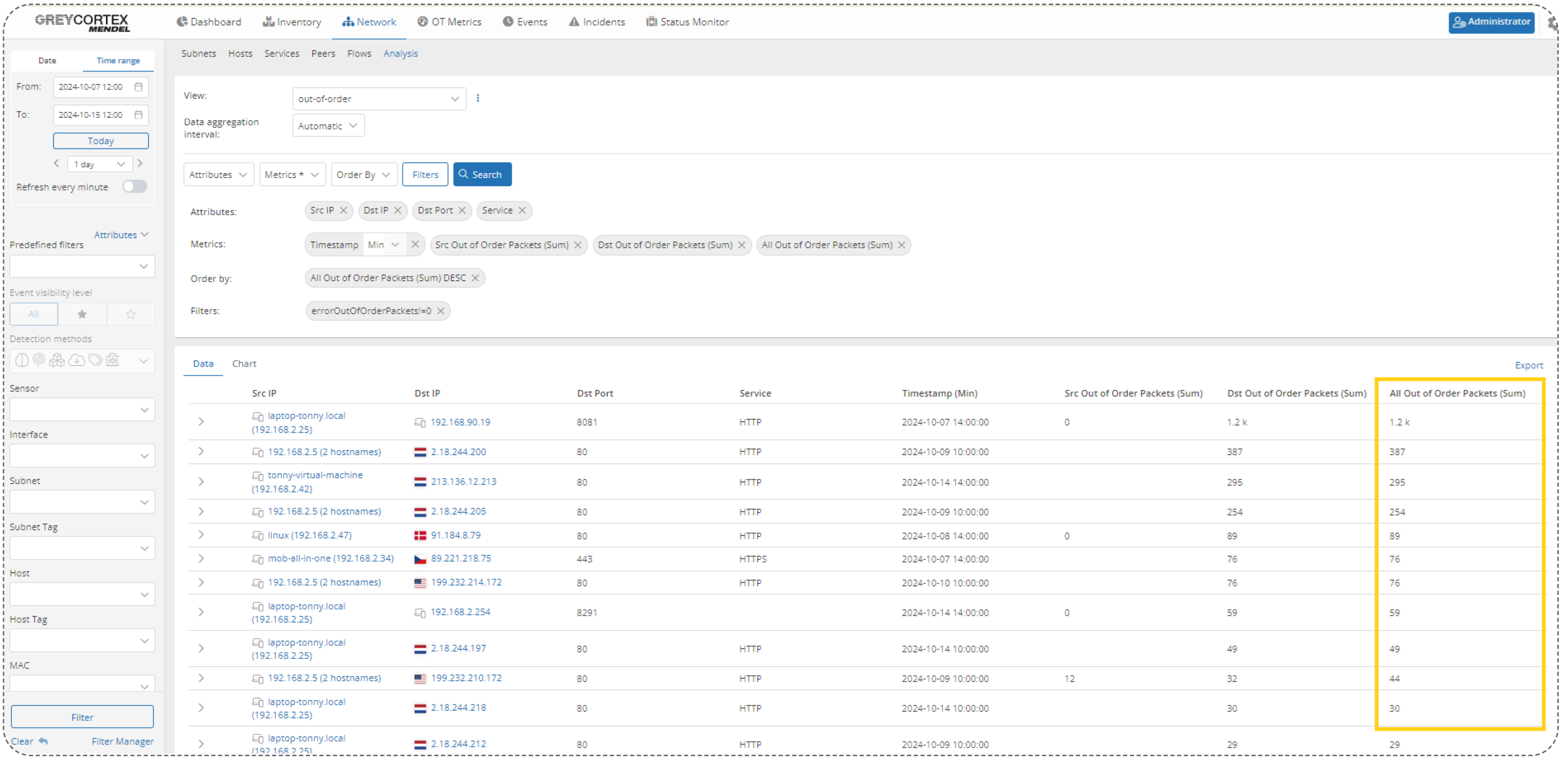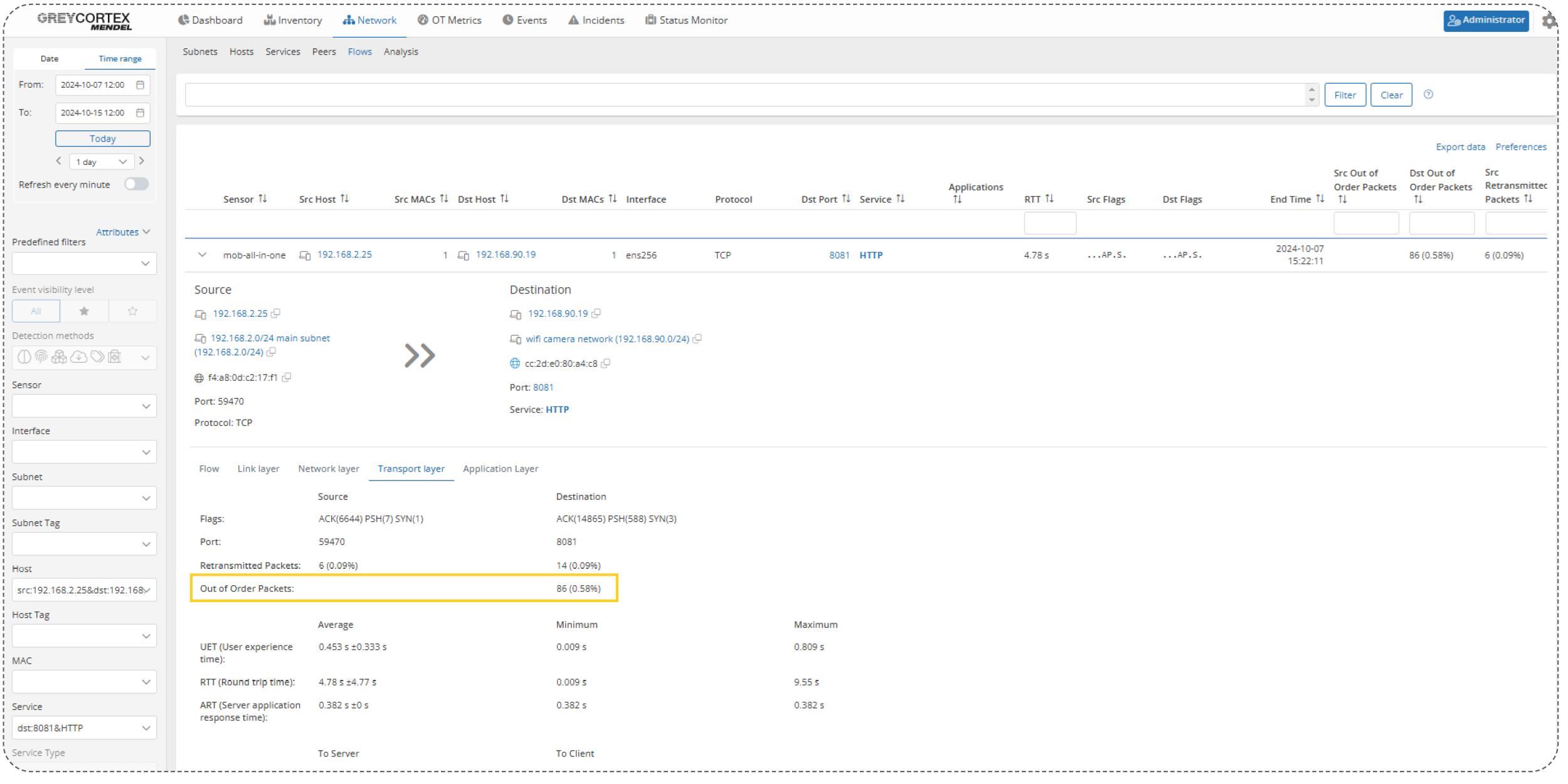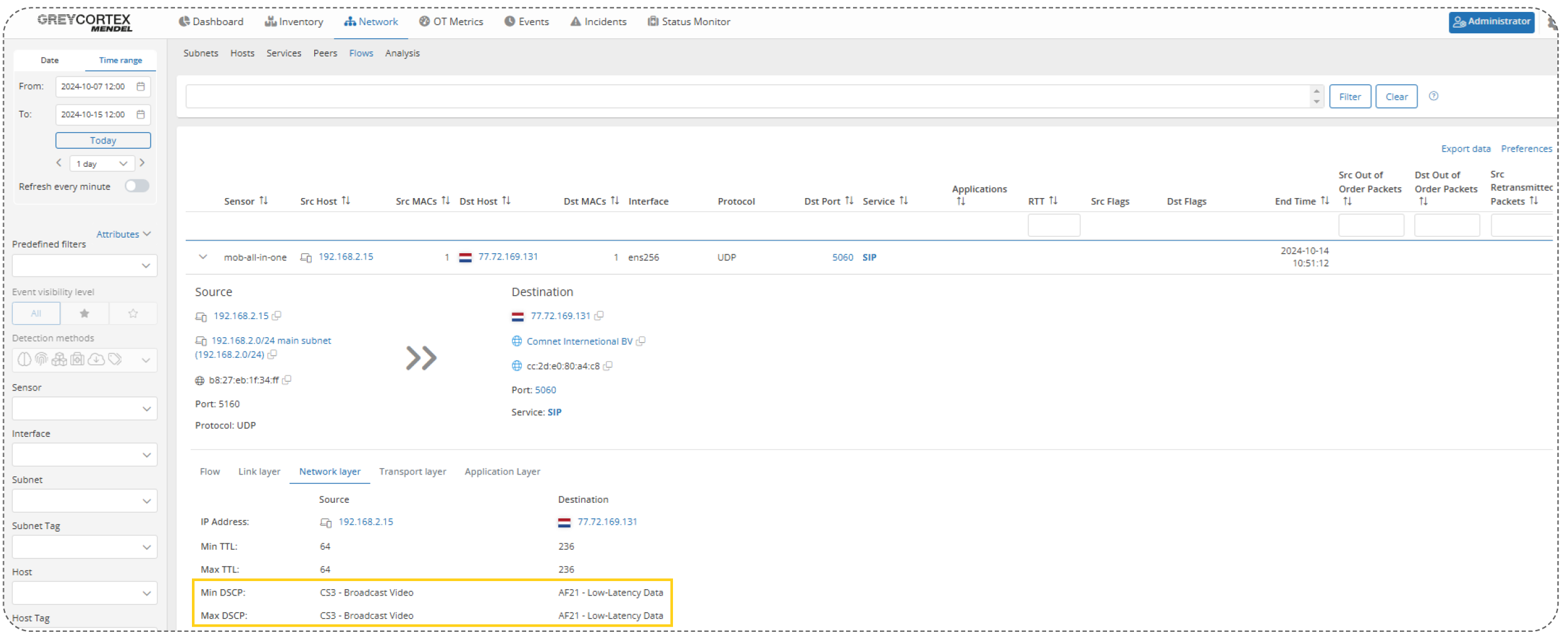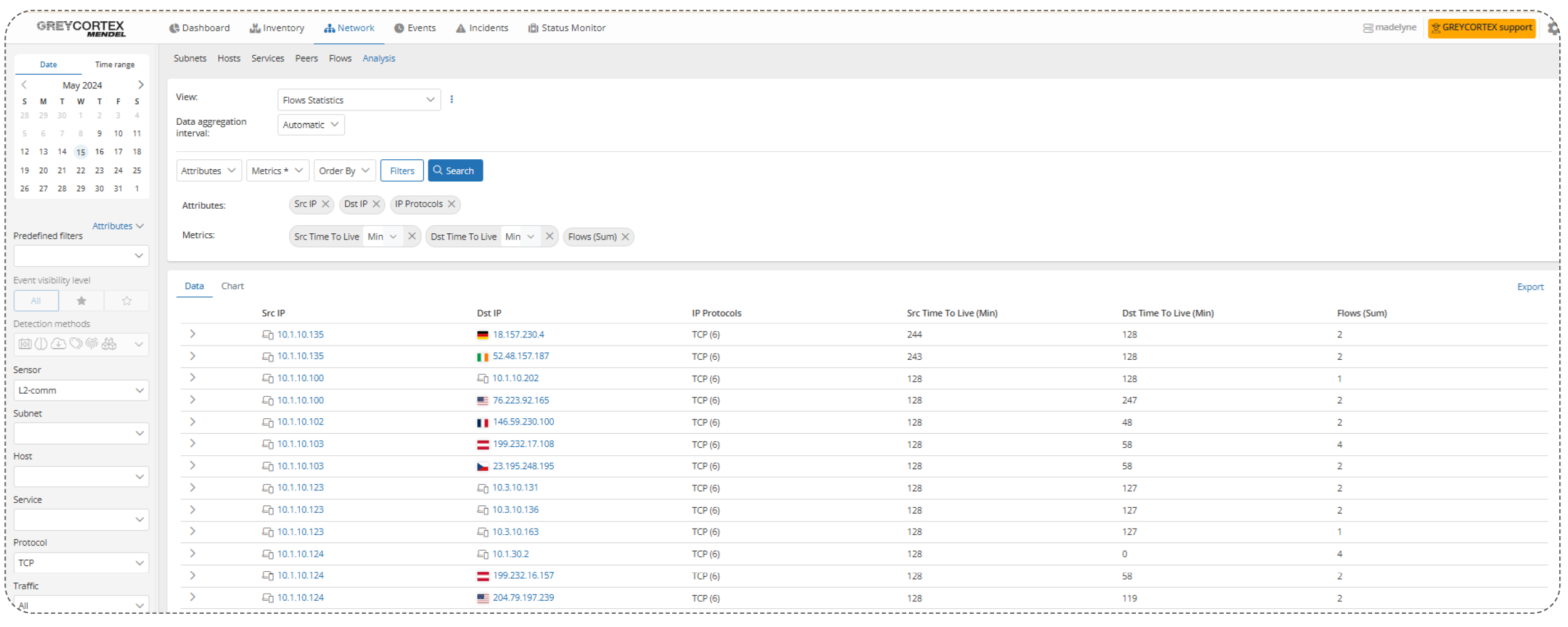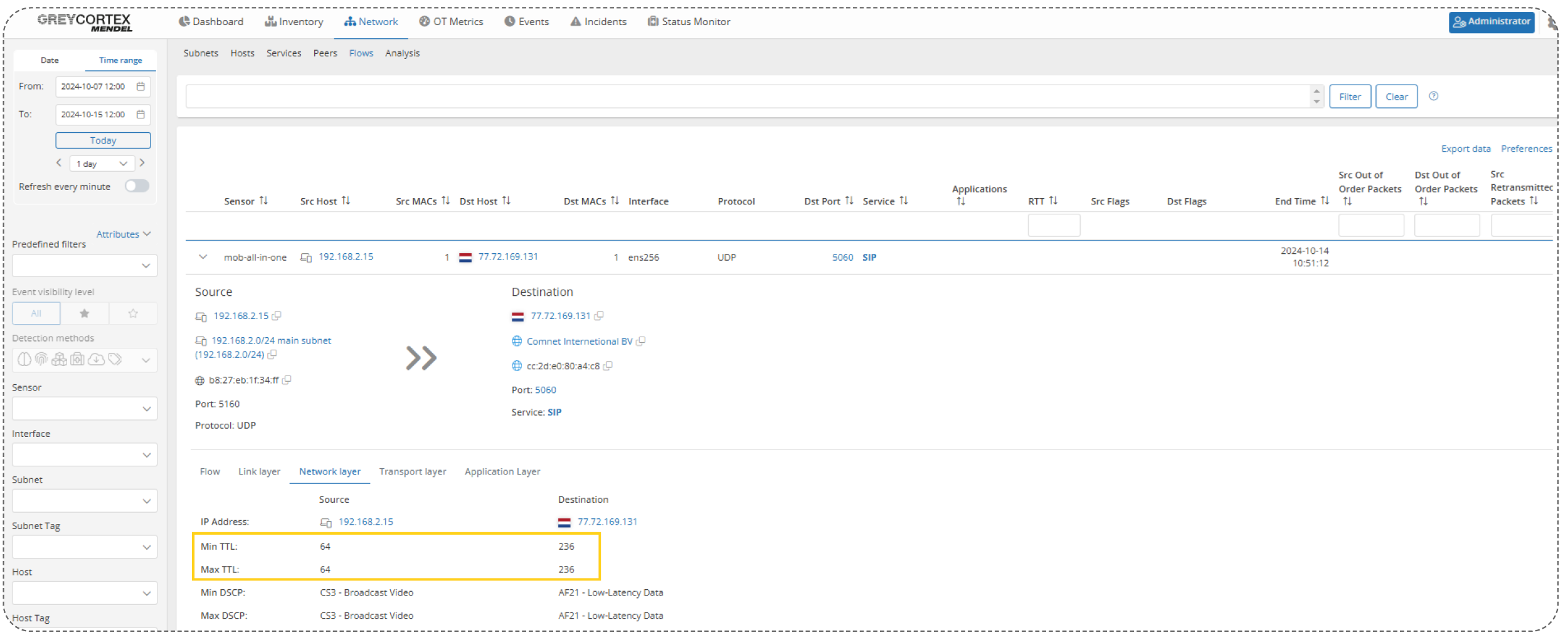In an era where digital connectivity drives business success, the stability of your network is non-negotiable. Imagine a scenario where your team is ready to launch a critical project, only to be halted by unexpected network outages or sluggish performance. The impact can be significant: lost productivity, frustrated employees, and dwindling profits. To avoid these pitfalls, proactive network monitoring is essential.
By keeping a vigilant eye on key performance metrics, NetOps teams can identify and resolve issues before they escalate into costly disruptions. That’s where GREYCORTEX Mendel comes in—offering the insights and monitoring tools needed to keep your network running smoothly and efficiently.
Essential Metrics for Network and Application Performance Monitoring
GREYCORTEX Mendel plays a pivotal role in monitoring your network traffic, measuring vital performance metrics like Round Trip Time (RTT), Application Response Time (ART), and User Experience Time (UET). In addition to these, Mendel also calculates network speed, application speed, data transfer speed, response time, jitter, latency, and other critical metrics by observing both inbound and outbound traffic. These metrics offer your NetOps teams valuable insights into your network health and application responsiveness.
Check out our webinar on analyzing network performance issues for a deeper dive into how GREYCORTEX Mendel monitors these metrics and how to use them for operational monitoring.
Diagnosing Network and Service Failures
Retransmissions
Retransmissions occur when data packets are sent but not acknowledged within a specified time, forcing the sender to resend the data. This can result from network congestion, dropped packets, or fluctuating network conditions. High retransmission rates can degrade performance and lead to slower response times.
Identification with Mendel: Mendel offers a quick overview of peer-to-peer communications, making it easy to identify large amounts of retransmitted packets across the network. If you detect abnormal retransmission rates in specific communications, you can dive deeper and investigate details in Mendel to pinpoint the root cause.
Out-of-order packets
Out-of-order packets occur when data arrives at its destination in a different sequence than it was sent, which can affect network traffic and disrupt communication, particularly for multimedia protocols like Real-time Transport Protocol (RTP) that rely on ordered delivery. Common causes include network congestion, load balancing, or routing changes. These packets may lead to increased latency, reduced throughput, and retransmissions.
Identification with Mendel: Mendel’s overview of peer-to-peer communications enables quick detection of out-of-order packets. Once identified, further analysis at the transport layer helps uncover the underlying causes.
Quality of service configuration
When running critical services like VoIP, video conferencing, or streaming over a network with limited bandwidth, configuring Quality of Service (QoS) helps prioritize these services to ensure smooth performance. However, it’s often difficult to verify whether QoS is configured correctly and if it’s truly improving service quality.
Identification with Mendel: Mendel allows you to easily verify QoS configurations by filtering specific protocols, such as SIP and examining details in the network layer. You can check your DSCP (Differentiated Services Code Point) settings in the network layer to confirm if QoS is applied properly and ensure services are prioritized as intended.
Network delays
Network performance can fluctuate due to various factors, such as network congestion, misconfigured devices, routing changes, or even issues at the physical layer. Monitoring performance metrics is essential to detect these fluctuations early. One important metric is Round Trip Time (RTT), which measures how long it takes for data to travel between two devices and return. Lower RTT values indicate faster communication, while higher RTT values suggest potential network delays or issues.
Identification with Mendel: Mendel continuously monitors RTT for all TCP messages by using sequence numbers and timestamps. It automatically detects and alerts you to anomalies in RTT, allowing you to investigate outliers. By comparing normal RTT values for hosts or subnets with current measurements, Mendel helps you identify deviations and pinpoint performance issues before they become critical.
Application response issues
Application performance is critical for ensuring a smooth user experience, especially in environments with high demands on responsiveness. Delays in application performance can be caused by issues such as server overloads, network bottlenecks, or inefficient data handling. One key metric is Application Response Time (ART), which measures the time between the start of sending data packets and their acknowledgment, providing insights into potential delivery delays.
Identification with Mendel: Mendel learns and models the normal ART for various applications. When it detects a deviation, Mendel alerts you that an application performance outlier has occurred. By identifying these deviations early, Mendel helps ensure that application performance remains optimal and prevents service slowdowns.
Packet cycling loops
To prevent packets from endlessly circulating in the network due to misconfigurations, especially at the routing level, each packet is assigned a Time To Live (TTL) value, also known as Hop Limit. TTL limits how long packets remain active in the network before being discarded. Different operating systems and devices, like routers, use various TTL values (e.g., Windows 128, Linux 64, network devices 255), though TTL 32 is typically sufficient in modern networks.
Identification with Mendel: Mendel enables fast analysis of TTL. Low TTL values (e.g., 15 or less) may indicate routing issues, where packets are taking too many hops or looping. Packets with a TTL of 0 are discarded before reaching their destination. Mendel helps pinpoint these issues, especially when large flows are affected, signaling the need for immediate action.
Unavailable services
When a service becomes unavailable, it interrupts operations by preventing access to essential resources. This can be caused by server shutdowns, migrations, network outages, or system misconfigurations. The impact varies based on the service’s importance—critical services like email servers typically generate a higher volume of events when they fail. Understanding the cause and impact is essential to restoring normal operations efficiently.
Identification with Mendel: Mendel detects when your services stop responding and alerts you. For example, if an email server goes down, Mendel will report a high volume of events as users’ requests go unanswered. In other cases, a lower volume of events could indicate that a system is attempting to reach a service that has been turned off or migrated.
Achieving Seamless Operations Through Proactive Monitoring
Delivering consistent network performance is key to your business’s success. GREYCORTEX Mendel provides the comprehensive visibility and advanced monitoring needed to detect and address performance issues before they impact your business. From identifying retransmissions to optimizing application performance, Mendel helps you maintain seamless operations and keep your network at peak efficiency.
To take full control of your network’s performance, learn more about Operational Monitoring with GREYCORTEX Mendel or watch our webinar for a deeper dive.
Categories
- Company News (34)
- Product News (26)
- IT/OT Security (37)
- Webinars (5)
